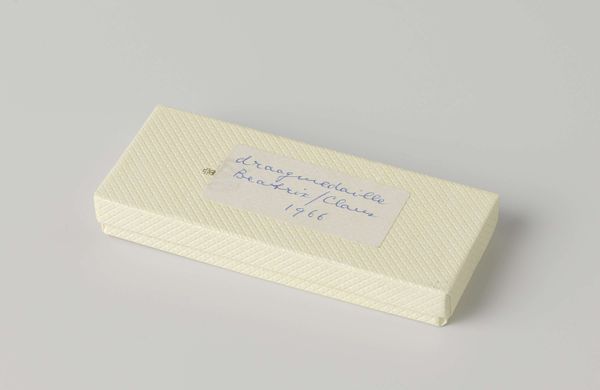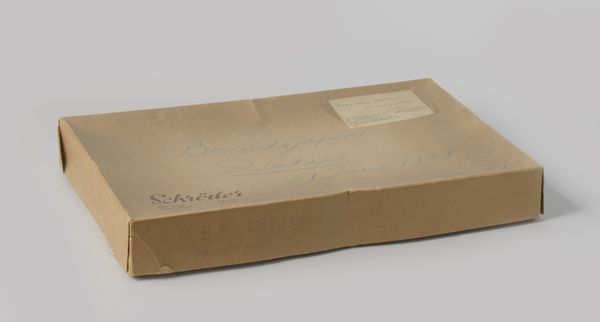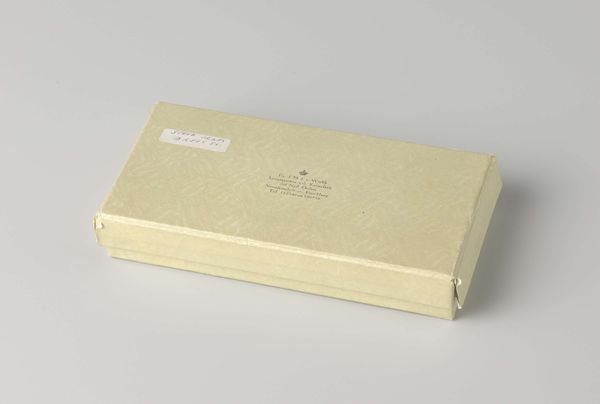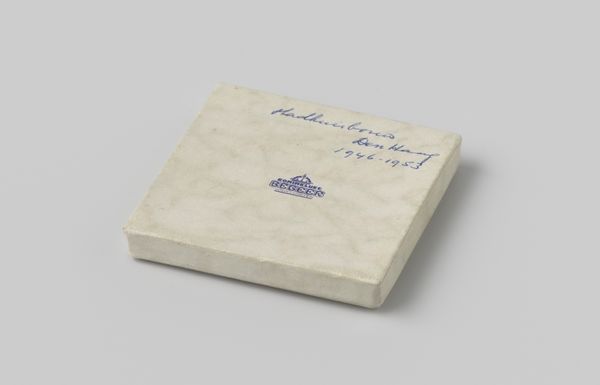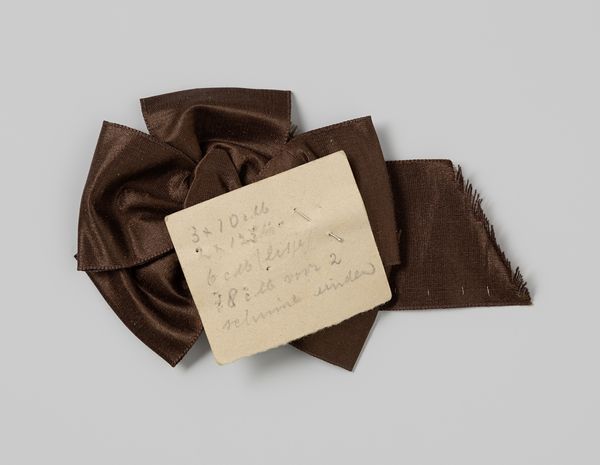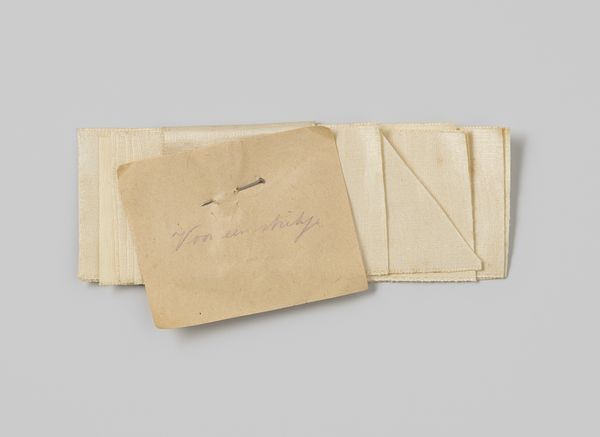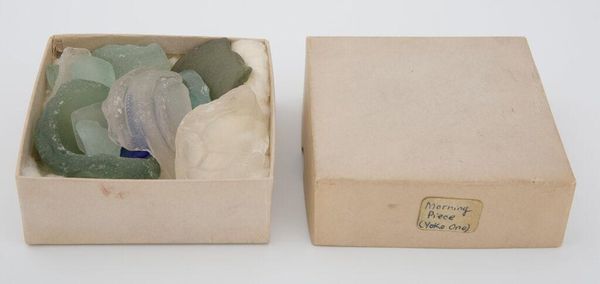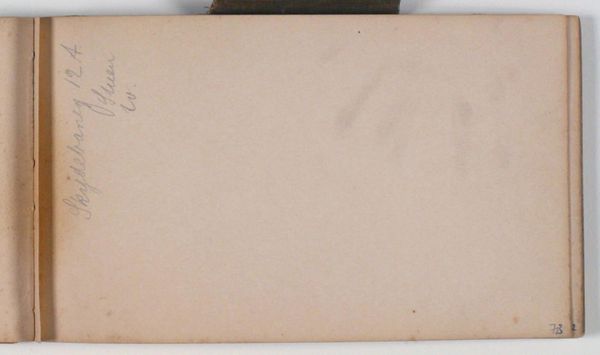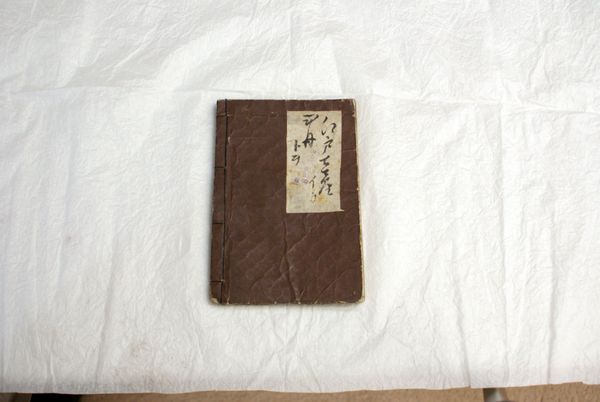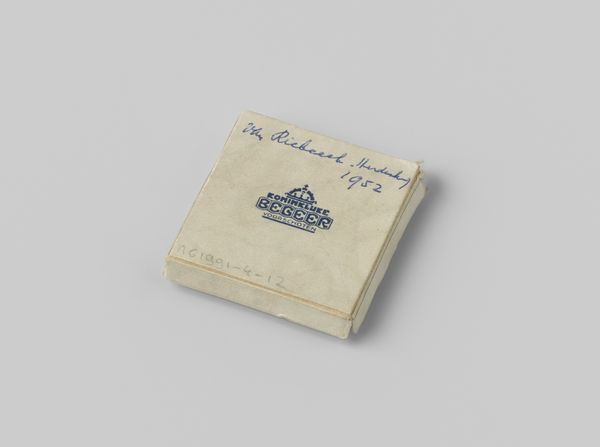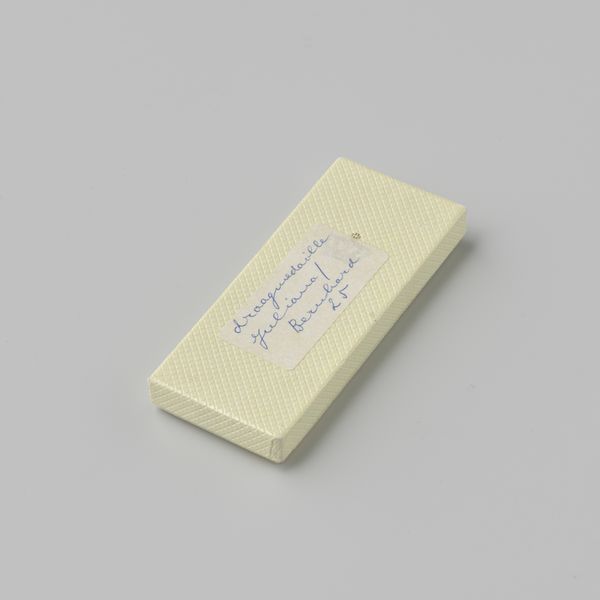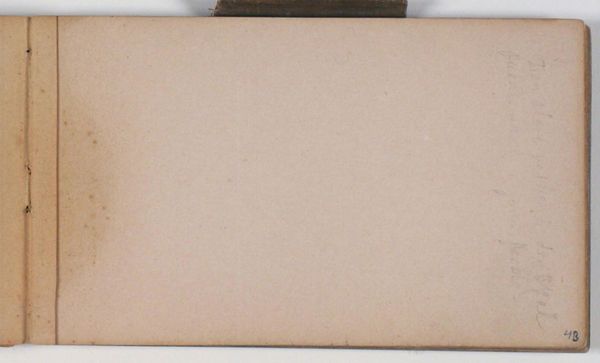
Doosje bij draagpenning van de inhuldiging koningin Juliana 1948 before 1949
0:00
0:00
Dimensions: length 6.6 cm, width 9.8 cm, height 2.1 cm
Copyright: Rijks Museum: Open Domain
Curator: Let’s take a look at this photograph, a still life featuring a small box titled "Doosje bij draagpenning van de inhuldiging koningin Juliana 1948," placing its creation sometime before 1949. It's an assemblage using photography. What’s your first impression? Editor: My first impression is quiet. There's a formality, perhaps dictated by the historical weight it hints at, but also an almost mundane intimacy because of its scale. An object of national significance rendered small. Curator: That tension between national narrative and personal object is key. The image speaks to the socio-political forces at play. Queen Juliana's inauguration marked a pivotal moment post-World War II, and commemorative items like this were powerful tools in solidifying national identity and public sentiment. Editor: Absolutely. It makes me consider the ways in which national identity is both constructed and consumed, especially by the every-person. Was owning this box a signifier? What class or status implications might be present? The textured surface of the box juxtaposed with the stark label also piques my interest, there's almost an unintended symbolism in this presentation. Curator: Precisely. It serves as a poignant artifact that links public ceremony with individual memory. Still-life-photography such as this encourages us to contemplate not just the event, but its afterlives. Think about where this object was sold, distributed, or how it later moved through family hands? Editor: This image really highlights how even seemingly innocuous items can reveal complex intersectional narratives tied to power, gender, and historical events. What can a tiny box commemorating a queen's crowning truly signify to a nation still healing from war? This picture makes you think about these paradoxes. Curator: Indeed. In focusing on these quiet assemblages, perhaps museums can encourage more open conversations about what it means to be part of national histories and imagine how even small artworks shape that belonging. Editor: I'm glad the museum chose to include this image of something so commonplace, elevating it as a way to look closer at not just a queen's coronation, but more specifically the people's experience of that historic change in power.
Comments
No comments
Be the first to comment and join the conversation on the ultimate creative platform.
